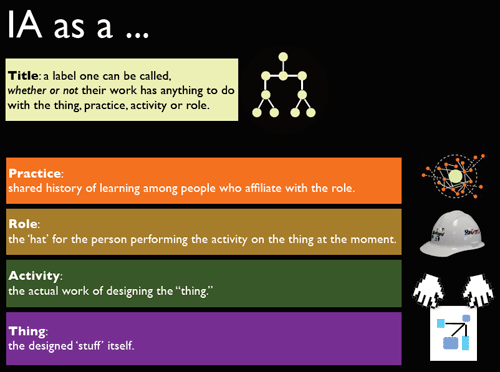Note: This is something I had embedded in a few very long presentations from last year, and I’m realizing it would probably be useful (to me if nobody else) to elaborate on it as its own topic. Here’s the first part.

There’s a lot of writing and thinking happening around the best approaches to designing platforms for social activity. I certainly haven’t read it all, and it keeps being added to every day. But from what I have read, and from the experiences I’ve had with social design factors, I distilled the basics down to a simple equation. “Cultivation equals Motivation divided by Moderation.” It sounds like a no-brainer, to those of us who’ve been thinking about this stuff for a while. For me, though, it helps keep focus on the three most important elements to consider with any social design undertaking.
Cultivation
Cultivation requires that we recalibrate the approaches we’ve inherited from traditional top-down ideas of social management & design. In other words, it’s cultivation rather than dictation. To ‘cultivate’ something implies that there is an existing culture — some organic, emergent, collective entity — that exists regardless of our intrusion, with its own natural rhythms and patterns.
Communities Happen
How do we help a community maintain its health, value and effectiveness for the individuals involved in it? We certainly don’t start re-defining it and prescribing (or pre-scripting) every process and action. Rather than dictating the content of the culture’s behavior, we create and manage the right conditions for the community to improve itself on its own terms. This is much more like gardening than managing in the traditional sense.
You can’t create a community by fiat. You can’t legislate or force participation — then all you get is a process, not social interaction. Social interaction may take place under the surface, but that’s in spite of your central planning, not because of it. Communities happen in an emergent way, on their own.
Mistaking the Ant-Hill for the Colony
It’s easy to make the mistake of thinking that the software for an online community actually is, in some way, the community itself — that the intentionally designed technology “network” is the social network. But these technological tools are a medium for the thing, not the thing itself. It’s like mistaking the ant hill for the ant colony. We often point at ant hills and say “there’s an ant colony” but the social behaviors of the ants exist whether they happen in that pile of earth or another.
Social software platforms tap into conversations that already exist in some form or another. At best they can enable and amplify those conversations and help them broaden outside of their original confines, even redefine themselves in some way. Of course, many of the connections people make on these platforms may never have happened without the software, but there had to be the propensity for those connections to happen to begin with.
Designing for social activity, then, is about creating infrastructure that helps communities and social patterns behave according to their own natures. Even the social character of the network isn’t created by the software. Rather, the platform’s architecture encourages only certain kinds of extant networking behaviors to thrive.
Take, for instance, LinkedIn vs MySpace. LinkedIn didn’t create the behavior of calm, professional networking interactions, introductions and linking between peers. That kind of behavior was going on long before LinkedIn launched. But its architecture is such that it allows and encourages only that kind of social interaction to take root. MySpace, on the other hand, is much more open architecturally; linking is much more informal, and self-expression is almost completely unfettered. The nature of the MySpace platform, however, essentially guarantees that few will want to use it for the sober, corporate-style networking that happens on LinkedIn. (Lots of professional work goes on in MySpace, of course, but mainly in the creative & performing arts space, where self-expression and unique identity cues are de facto requirements.)
So the character of the platform’s architecture — its rules and structures — determine the character of social behavior that your platform is most likely to attract and support. But once you’ve done that, then how do you cultivate it?
Authenticity
One important factor is something you can’t create artificially: the cultivators have to be invested in the community they’re cultivating. This cannot be faked. There are too many levels of tacit understanding — gut-level feel — necessary for understanding the nuances of a particular culture involved to do otherwise. You have to be willing to get your hands dirty, just like in a garden. Communities are fine with having decisions and rule-creation happening from some top-down component (which we’ll talk about in a minute) but only if they perceive the authority as having an authentic identity within the community, and that any design changes or “improvements” to the platform are coming from shared values.
Example: one reason for Facebook’s public-relations troubles of late is that a number of the design decisions its creator has made have come across as being less about cultivating the community than lining the pockets of investors. Privacy advocates and regular users revolted, and forced Facebook to adjust their course.
Another example: MySpace managed to give new users the impression that the people running the site were just “one of them” by creating the ubiquitous persona of “Tom.” Tom is a real person, one of the co-founders of the platform, who has a profile, and who “welcomes” you to the network when you join. He’s the voice for announcements and such that come from those who created and maintain MySpace. Tom is real, to a point — recently, it was discovered that Tom’s age and information have been tweaked to make him seem more in line with the service’s target demographic. It’s arguable that by the time this disillusioning revelation occurred, MySpace had grown to enough critical mass that it didn’t matter. I suspect, though, that the Tom avatar still serves its purpose for millions of users who either don’t know about the news, or think of him more as the Ronald McDonald of the brand — a friendly face that gives the brand some personality, even if they don’t care if it’s a real person.
If you’re cultivating from an authentic stance, and you understand that your role isn’t dictator, then it’s a matter of executing cultivation by striking the right balance between Motivation and Moderation.
Next up … Motivation & Moderation. Stay tuned.





